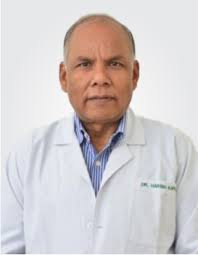What is Transabdominal Cerclage, and how much does it cost in India?
Transabdominal Cerclage (TAC) is a surgical procedure performed to prevent late miscarriage or preterm birth in women diagnosed with cervical insufficiency (also known as an incompetent cervix), especially when vaginal cerclage has failed or is not feasible. Unlike the vaginal stitch, TAC is placed at the top of the cervix through the abdomen, ensuring a stronger and more permanent closure.
India is one of the most affordable destinations for this specialized surgery, offering world-class expertise at a fraction of the international cost.
What is Transabdominal Cerclage, and how does it work?
Transabdominal Cerclage (TAC) is a surgical cervical stitch placed via the abdomen—either through a laparoscopic or open approach. It is designed to provide structural support to the cervix and prevent premature dilation, which can lead to second-trimester pregnancy losses.
This procedure differs from vaginal cerclage in that:
- It is placed higher at the level of the internal os.
- It can be performed before or during early pregnancy (usually between 10–14 weeks).
- It remains permanently in place and does not require removal unless a cesarean section is planned.
TAC has become the gold standard for women with a severely shortened or damaged cervix, especially after failed vaginal cerclage or previous pregnancy losses.
What are the types of cerclage procedures available?
There are primarily two types of cervical cerclage procedures:
1. Transvaginal Cerclage
- Most common and less invasive
- Performed through the vaginal canal
- Suitable for women with mild to moderate cervical incompetence
- Can be placed using the McDonald or Shirodkar technique
- Removable before delivery
2. Transabdominal Cerclage (TAC)
- Requires a surgical incision through the abdomen
- Stitch is placed above the cervix, near the uterine isthmus
- Recommended when vaginal cerclage is not possible or has failed
- Usually left in place permanently
- Delivery must be done via cesarean section
In India, both open and laparoscopic TAC are offered depending on the medical history, surgical need, and preference. TAC is ideal for women with short cervix, previous late miscarriages, or failed vaginal cerclage.
Who needs Transabdominal Cerclage? What are the key medical indications?
TAC is a specialized procedure indicated in high-risk pregnancies where vaginal cerclage is not an option or has previously failed. Candidates include women with:
- Congenital cervical abnormalities (e.g., extremely short or absent cervix)
- Failed transvaginal cerclage in a previous pregnancy
- Cervical trauma from previous surgery or injury (e.g., LEEP, conization)
- Multiple second-trimester pregnancy losses
- Prior uterine surgeries making vaginal access unsafe
- History of painless cervical dilation leading to miscarriage
Doctors may recommend TAC pre-pregnancy or early in pregnancy (ideally before 14 weeks) to optimize safety and outcomes. In India, maternal-fetal medicine specialists carefully evaluate each case through scans and medical history before recommending TAC.
What tests and evaluations are needed before TAC, and what’s the cost in India?
Prior to undergoing Transabdominal Cerclage, a thorough medical evaluation is necessary to confirm cervical insufficiency and assess maternal and fetal health.
Essential preoperative tests:
|
Test |
Purpose |
Estimated Cost (USD) |
|
Pelvic Ultrasound / TVS |
Evaluate cervical length and structure |
$30 – $60 |
|
Viability Scan / Fetal Ultrasound |
Assess pregnancy and fetal heartbeat |
$40 – $70 |
|
CBC, Blood Group, Coagulation |
Check general health and bleeding risks |
$20 – $40 |
|
Urine Test & Culture |
Detect infections |
$10 – $20 |
|
Pap Smear (if not recently done) |
Rule out cervical abnormalities |
$20 – $30 |
|
Electrocardiogram (ECG) |
Ensure cardiac fitness for surgery |
$15 – $25 |
|
Physician/Pregnancy Anesthesia Evaluation |
Pre-surgical clearance |
$40 – $60 |
Total pre-op test cost in India: $150 – $250
These tests help doctors determine if TAC is medically appropriate and ensure the safety of both mother and baby during the procedure. If TAC is performed during pregnancy, fetal viability and development must be confirmed before scheduling surgery.
What is the detailed treatment protocol for Transabdominal Cerclage (TAC) in India?
The treatment protocol for Transabdominal Cerclage involves a series of steps, from preoperative assessment to surgery and postoperative care. In India, this is conducted by a team of maternal-fetal medicine specialists, anesthesiologists, and surgical nurses.
Step-by-Step TAC Protocol:
1. Preoperative Evaluation:
- Medical history review
- Cervical length assessment via ultrasound
- Basic blood and urine investigations
- Confirmation of fetal viability (if pregnant)
2. Surgical Planning:
- Procedure is ideally scheduled between 12–14 weeks gestation, or before pregnancy in recurrent cases
- Patient fasting for 6–8 hours prior to surgery
- Anesthesia clearance
3. Surgical Procedure:
- Anesthesia: Typically general or regional (spinal/epidural)
- Approach: Open laparotomy or laparoscopic access
- Suture placement: A permanent stitch is placed at the level of the internal os using Mersilene tape or other synthetic non-absorbable material
- Uterus is not opened during the procedure
- Surgery typically lasts 60–90 minutes
4. Postoperative Recovery:
- Hospital stay: 1–3 days
- Medications: Pain relief, infection prevention, uterine relaxants if needed
- Gradual return to normal activity
- Pregnancy follow-up continued as per obstetric protocol
5. Delivery Planning:
- Cesarean delivery is planned between 36–38 weeks
- The TAC stitch is left in place for future pregnancies
This protocol ensures maximum cervical support, reduces the risk of mid-trimester pregnancy loss, and allows for multiple pregnancies without needing repeat surgery.
What are the types of TAC procedures and what devices or materials are used?
In India, advanced hospitals offer both laparoscopic and open transabdominal cerclage techniques based on the patient’s condition and surgeon’s recommendation.
Procedure Types:
|
Type |
Description |
|
Open TAC (Laparotomy) |
Traditional open abdominal surgery with small incision near bikini line |
|
Laparoscopic TAC |
Minimally invasive approach using small ports and a camera-guided device |
Laparoscopic TAC offers faster recovery, minimal scarring, and less blood loss, but may not be suitable for all patients (e.g., those with uterine anomalies or surgical adhesions).
Devices & Materials Used:
- Laparoscopic instruments (camera, graspers, suturing tools)
- Non-absorbable suture material (e.g., Mersilene tape)
- Electrocautery tools for hemostasis
- General anesthesia delivery system
- Fetal monitoring devices during pregnancy-based TAC
The success of TAC depends greatly on the precision of stitch placement and quality of materials, both of which are standardized in top Indian surgical centers.
What is the cost breakdown for Transabdominal Cerclage in India?
India offers a transparent and economical cost structure for TAC, including everything from preoperative evaluation to hospital stay and post-op care.
Estimated Cost Breakdown:
|
Service/Procedure |
Estimated Cost (USD) |
|
Initial OB/GYN Consultation |
$40 – $60 |
|
Ultrasound & Diagnostic Tests |
$150 – $250 |
|
Anesthesia & Pre-op Clearance |
$100 – $150 |
|
Surgery (Open or Laparoscopic) |
$1,800 – $2,800 |
|
Suture Material (Mersilene) |
Included or ~$100 |
|
Hospital Stay (1–3 days) |
$300 – $600 |
|
Postoperative Medication |
$100 – $200 |
|
Follow-up Visit (1–2 times) |
$50 – $80 |
Total Estimated Cost: $2,800 – $4,200
Patients traveling from abroad can also opt for all-inclusive medical tourism packages covering treatment, stay, local travel, and language assistance.
What are the advantages of undergoing TAC surgery in India?
India is increasingly becoming a top choice for maternal care, particularly in high-risk pregnancies and fertility-preserving surgeries like Transabdominal Cerclage.
Advantages include:
- Experienced maternal-fetal medicine specialists
- Access to laparoscopic TAC with international-standard equipment
- High success rates in preventing second-trimester miscarriages
- Personalized, compassionate care for international families
- Affordable, transparent pricing with no hidden charges
- Assistance with medical visa, accommodation, translators
Moreover, Indian hospitals are known for their low infection rates, ethical standards, and patient-centric approach to women’s reproductive health.
Why do international patients prefer India for Transabdominal Cerclage and high-risk pregnancy care?
India has emerged as a global destination for high-risk maternal care and complex gynecological procedures. For women who’ve experienced previous pregnancy losses or are diagnosed with cervical insufficiency, India offers a complete ecosystem of care — from advanced diagnostics to fertility-preserving surgeries like Transabdominal Cerclage (TAC).
Reasons international patients choose India:
- Internationally trained specialists in maternal-fetal medicine
- Advanced laparoscopic surgical options with high precision
- Affordability – up to 70–80% savings compared to Western countries
- World-class hospitals with NABH and JCI accreditations
- English-speaking staff and interpreter support
- No waiting period – surgery scheduled quickly
- End-to-end care coordination including medical visa, airport transfers, and stay
Many patients also choose India for its personalized care approach, where cultural sensitivity and emotional support are provided alongside clinical excellence.
Why choose Healzone for Transabdominal Cerclage medical tourism coordination in India?
Healzone serves as a dedicated international patient coordination partner, ensuring that foreign patients seeking TAC and maternal surgeries in India receive seamless, reliable, and transparent care from start to finish.
Key reasons to choose Healzone:
|
Feature |
What It Means for Patients |
|
Personalized Case Evaluation |
Your medical history is reviewed before you travel — reducing uncertainty |
|
Best-Match Hospital Selection |
Hospitals are selected based on procedure expertise, not just brand name |
|
Cost Transparency |
You receive a clear, itemized estimate with no hidden charges |
|
Medical Visa Support |
Get visa invitation letters and documentation help quickly |
|
End-to-End Coordination |
From airport pickup to local SIM cards, everything is pre-arranged |
|
Interpreter & Travel Desk |
Arabic, French, Russian, and other language support available |
|
International Patient Concierge |
Dedicated 24/7 care coordinator during your hospital stay and recovery |
With Healzone, international patients feel supported, informed, and safe, making their experience stress-free while focusing on healing and maternal well-being.
What is the recovery time after TAC surgery and what are the long-term outcomes?
Recovery after Transabdominal Cerclage varies slightly depending on whether the procedure was open or laparoscopic, but in both cases, Indian hospitals provide structured post-op support and clear guidelines.
Recovery Timeline:
|
Recovery Phase |
Typical Duration |
|
Hospital stay |
1–3 days (open) or 1–2 days (laparoscopic) |
|
Return to normal activity |
7–14 days (with precautions) |
|
Post-op consultation |
7–10 days after surgery |
|
Pregnancy monitoring |
Ongoing as per obstetric schedule |
|
Delivery plan |
Elective cesarean at 36–38 weeks |
Patients are advised to avoid heavy lifting, strenuous exercise, and intercourse for a few weeks post-surgery. Pain is usually mild and manageable with oral medication.
Long-Term Outcomes:
- Success rate in preventing second-trimester loss: 85–95%
- Stitch remains in place for future pregnancies
- Less than 2–3% complication rate
- TAC does not affect menstrual cycles or fertility
- Delivers emotional relief and stability for previously affected couples
Women who undergo TAC in India often express high satisfaction due to compassionate care, medical success, and improved pregnancy outcomes in subsequent gestations








